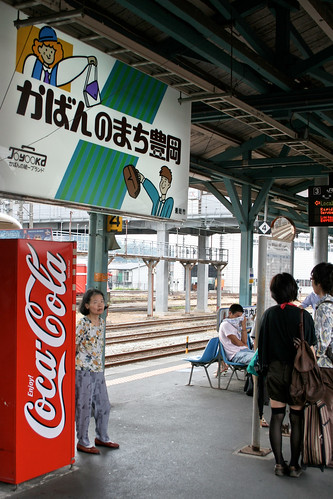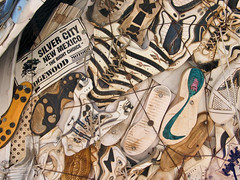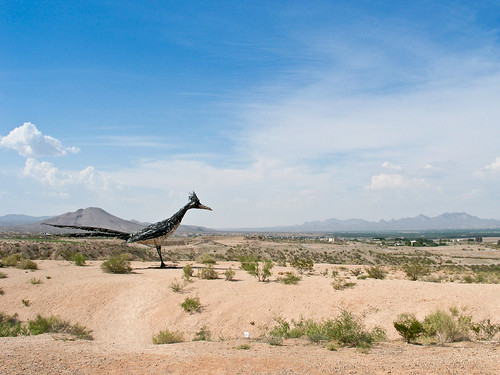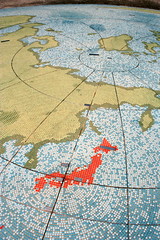
Recently I was asked by
Kaley about my favorite place in Japan. This is a hard question. A very hard question for a geographer like myself. The first thing that came to mind were a few of my favorite
onsen and
sento. I have a
site full of them for god-sakes! Then I thought about some of my
favorite train stations scattered across rural Japan. What about
the temples? None of these single sites however encapsulated my experience here on their own. For Kaley, and you, I wanted to choose a location that I could say has been a massive positive effect on my life and my view of Japan. A place that I hope you could find in your neighborhoods.
I often cannot understand how people living here can complain so much about the country on the various gaijin blogs and message boards. Why don’t I complain like that? Why am I immune to the problems that bother many other fellow foreigners here? A lot of it has to do with mindset and language ability I can imagine, but, very important, is having a sense of community in the place you live. And this, I must add, is independent of Japan but a worldwide phenomenon. Community is important. I’ve lived in an apartment building where I never knew my neighbors. It’s not that appealing and somewhat dangerous.
So where do I find that Community? My local bar:
The Wexford Tavern or The Wex as it’s known. Ever since moving to Japan I’ve been going there. The first location was a small 10 seat counter on the first floor of the owner’s house. It was there that I first met Yuko who would later become my wife and the mother to our
daughter Mia. Just that fact would should put The Wex as my most important place in Japan. When we got married a few years after that first meeting we also had our wedding party at the bar. It seemed appropriate as most of the people we invited were also regulars or at least sometime customers.
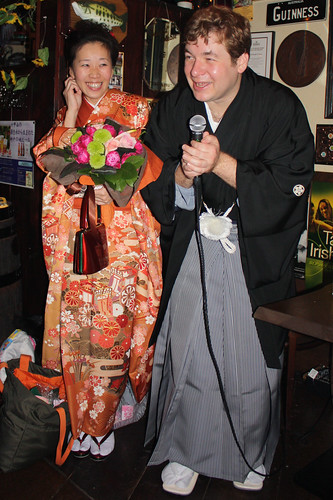 |
| Our Wedding Party |
Soon after I first started going to The Wex back in 2005 they moved to a larger location down the street a bit. At the second location I really began to become a regular customer. I was hard at work studying Japanese and spent much of my time away from my fellow English speaking classmates and drinking in Japanese bars mostly. The Wex became my English speaking time. As I ended up being there more and more and interacting with the Japanese customers it became my Japanese practice time too. Now, in either language, it’s just chatting. My speaking ability has a lot to do with sitting around and blabbering in Japanese for hours about who knows what.
The community at the Wex has beginning language learners to masters of English, Japanese, and a few more languages. It’s a place where you can try out your foreign language ability--a place many of my college students are looking for, but I’m not at liberty to tell them. You’ll often hear someone yelling across the bar how do you say this or that since at least one person there would know. One of the regulars really began speaking English at the Wex and now he comes in and is blabbering on in English to the point that new customers think he’s Filipino! I’ve learned by watching him that the ample usage of the F word is the key to sounding like a native speaker.
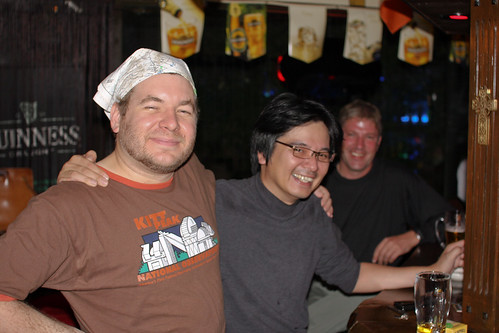 |
| Back when I had a beard. |
The regulars at the Wex are for the most part long time residents of Japan, married with children and speak Japanese to various degrees of fluency. The range of personalities and characters makes it interesting. Sometimes we get heated in a conversation, but everyone leaves happy that they enjoyed drinking and chatting. It’s more of a local pub that just happens to be in Japan. It’s not a pick-up bar for Geos teachers here for a year or two. People do meet each other at the Wex. I mean, I met my wife there! The point is that it’s relaxed. It’s a safe place for women to come by themselves. Some customers don’t even drink, Yuko, stopped drinking and smoking sometime before getting pregnant, but she still enjoys having a ginger ale while talking to her friends. It’s the atmosphere.
The Wexford Tavern has played an important part of my life here in Japan and Nishinomiya. Without The Wex my neighborhood would be a totally different place. I’d really, actually consider moving to Shimane or Kagoshima rather than just blow hot air about it. If you’re in the neighborhood, by all means come up and have a drink. I’m sure you’ll have a good time.
www.wexfordtavern.jp
Access
Open from 6PM, 7 days a week.

